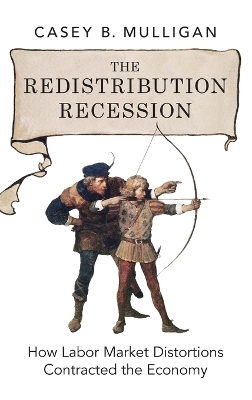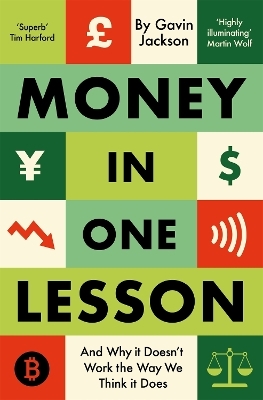
The Redistribution Recession
Oxford University Press Inc (Verlag)
978-0-19-994221-3 (ISBN)
Labor economist Casey B. Mulligan argues that because the way these trends have affected the labor market, they deepened, if not caused, the recession. He explains how progressive tax rates and binding minimum-wage laws reduce labor usage, consumption, and investment, and how they increase labor productivity. This means that while a small part of the population actually works more, overall hours worked in the whole economy are less. He explains and examines the pratical ways that for many people during a recession it costs more to earn more, and how people are working less because of it. One newly discovered aspect of the costs on earning is the large portion of the labor force renegotiating debt. Mulligan quantifies how borrowers can expect their earnings to affect the amount that lenders will forgive in debt renegotiation, and how this has acted as a massive implicit tax on earning. He also measures the changes in market tax rates that resulted directly from "social safety net" programs, and quantifies these changes' effects on the labor market and the economy. Mulligan argues that much of the decline in labor usage since 2007 was a reaction to the combination of higher marginal tax rates and a higher federal minimum wage, and that it is important to understand why labor market distortions like these suddenly increased, and to what degree those increases were caused by the various measures enacted to boost the labor market.
The Redistribution Recession is a controversial, clear-cut, and thoroughly researched analysis of the effects of various government policies on the labor market during the recent recession.
Professor of Economics, University of Chicago, author of Parental Priorities and Economic Inequality, weekly contributor to Economix blog for the New York Times
Preface ; Chapter 1 Introduction ; Chapter 2 The Rise of Labor Productivity ; Quarterly Indicators of Aggregate Economic Quantities ; Movements Along an Aggregate Marginal Productivity Schedule ; On Average, Real Wages did not Fall ; Was It Customer Demand? Factor Reduction and Factor Substitution by Industry ; Neither Wealth Effects nor Intertemporal Substitution Effects Explain the <"Supply>" Shift ; Labor Market Distortions since 2007 ; Conclusion: Productivity Patterns Begin to Reveal the Recession's Causes ; Appendix 2.1: Productivity, Labor, and Residuals in Prior Downturns ; Appendix 2.2: Sensitivity Analysis ; Chapter 3 The Expanding Social Safety Net ; A Framework for Quantifying the Generosity of the Safety Net as a Whole ; Legislation Made the Safety Net Available to Millions More ; Legislation Increased the Amount of Benefits Received per Program Participant ; Most of the Increase in Government Safety Net Expenditure is the Direct Result of Program Rule Changes ; Safety Net Rule Changes and Assistance for the Unemployed ; Means-tested Loan Forgiveness ; Conclusion: Replacement Rates for Aggregate Analysis ; Appendix 3.1: Calculation and Aggregation of Statutory Eligibility and Benefit Indices ; Appendix 3.2: Sensitivity Analysis ; Appendix 3.3: The Self-Reliance Rate Outlook ; Appendix 3.4: The Making Work Pay Tax Credit ; Chapter 4 Supply and Demand: Labor Market Consequences of Safety Net Expansions ; The Income-Maximization Fallacy ; Labor and Output Effects of Safety Net Expansions ; Predictions for Consumption and Investment ; Calibrating the Wage Elasticity of Aggregate Labor Supply ; Conclusions and Interpretation ; Appendix 4.1: Comparative Advantage with Heterogeneous Effects of the Safety Net Expansions ; Appendix 4.2: Calibrating the Supply Elasticity from Unemployment Duration Studies ; Appendix 4.3: Safety Net Distortions Measured in Dollars per Year ; Chapter 5 Means-Tested Subsidies and Economic Dynamics since 2007 ; The Neoclassical Growth Model with Targeted Means-Tested Subsidies ; Data and Simulation Results ; Effects of the Safety Net Expansion ; Interpreting the Residual Labor Market Distortions ; An Investment Distortion by Itself does not Fit Actual Behavior ; Conclusions ; Appendix 5.1: Calibration, Simulation, and Additional Sensitivity Analysis ; Chapter 6 Cross-Sectional Patterns of Employment and Hours Changes ; Cross-sectional Patterns of Self-Reliance Rate Changes ; Work Hours Changes by Demographic Group and Region ; Program Participation Changes by Demographic Group ; Conclusion: The Cross-Sectional Patterns of Employment and Hours Changes are as Expected from a Large Safety Net Expansion ; Appendix: Summary Statistics and Additional Results ; Chapter 7 Keynesian and Other Models of Safety Net Stimulus ; The Safety Net and Consumer Spending ; Transfers and Government Purchases are not the Same ; Labor Market Slack and the Marginal Effects of Supply ; Sticky Prices, the Wage Elasticity of Labor Demand, and the Zero Lower Bound ; An Econometric Model that Nests My Approach with the Slack Market and Sticky Price Hypotheses ; Conclusion: Whether Labor Supply Matters More, or Less, during a Recession is an Empirical Question ; Appendix: The Safety Net, Sticky Prices, and Monetary Policy ; Chapter 8 Recession-Era Effects of Factor Supply and Demand: Evidence from the Seasonal Cycle, the Construction Market, and Minimum Wage Hikes ; The Christmas and the Academic Seasons as Demand and Supply Shifts ; Christmas Demand in Recessions and Booms ; The Summer Seasonal for Employment and Unemployment ; Housing Investment Crowds Out Non-Residential Construction ; The Employment Effects of Recent Minimum Wage Hikes Were No Less than Before ; The Federal Minimum Wage Hikes Likely Reduced National Employment by Hundreds of Thousands, Especially Among the Young and Unskilled ; Conclusion: Labor Supply Still Matters, About as Much as It Did in the Past ; Chapter 9 Incentives and Compliance under the Federal Mortgage Modification Guidelines ; The Budget Set of a Borrower Facing the FDIC-HAMP Modification Guidelines ; Borrower Reactions under Full Information and Full Compliance: Spend More and Work Less ; Lender Incentives to Expand Modification Capacity ; Conclusions ; Appendix 9.1: Principal Modifications and the Eligible Income Range ; Appendix 9.2: Marginal Tax Rates with Various Horizons and Discount Rates ; Chapter 10 Uncertainty, Redistribution, and the Labor Market ; A Model of the Equity-Efficiency Tradeoff ; Possible Changes in the Equity-Efficiency Tradeoff, and the Optimal Degree of Social Insurance ; The Cost-Benefit Analysis of Safety Net Expansions: Necessary Ingredients ; Conclusions ; Chapter 11 Conclusions ; Incentives Matter ; Was the Financial Collapse a Cause, or Effect? ; Labor Supply and Demand Help Explain an Unhappy Situation ; Bibliography
| Erscheint lt. Verlag | 31.1.2013 |
|---|---|
| Zusatzinfo | 60 two-color line illustrations |
| Verlagsort | New York |
| Sprache | englisch |
| Maße | 236 x 157 mm |
| Gewicht | 748 g |
| Themenwelt | Wirtschaft ► Volkswirtschaftslehre ► Finanzwissenschaft |
| Wirtschaft ► Volkswirtschaftslehre ► Makroökonomie | |
| Wirtschaft ► Volkswirtschaftslehre ► Mikroökonomie | |
| ISBN-10 | 0-19-994221-8 / 0199942218 |
| ISBN-13 | 978-0-19-994221-3 / 9780199942213 |
| Zustand | Neuware |
| Haben Sie eine Frage zum Produkt? |
aus dem Bereich


